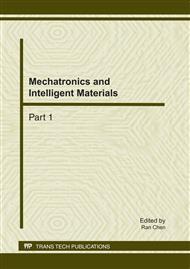[1]
Shih P., and Liu C, Improving the face recognition grand challenge baseline performance using color configurations across color spaces, IEEE Intl. Conf. on Image Processing, 2006: 1001-1004.
DOI: 10.1109/icip.2006.312668
Google Scholar
[2]
J. Creed, and A Abbott, Color Face Recognition by Hypercomplex Gabor Analysis, Proceedings of the 7th International Conference on Automatic Face and Gesture Recognition, 2006: 522-529.
DOI: 10.1109/fgr.2006.30
Google Scholar
[3]
J. Yang, and C. Liu, A general discriminant model for color face recognition, IEEE 11th International Conference on Computer Vision, pp.1-6, Oct. (2007).
DOI: 10.1109/iccv.2007.4409070
Google Scholar
[4]
L. Torres, J. Y. Reutter, and L. Lorente, The importance of the color information in face recognition, Proc. Int'l Conference on Systems, Man and Cybernatics, Vol 3, pp.627-631, (1999).
Google Scholar
[5]
C. Z. Wang, B. C. Yin, X. M. Bai, and Y.F. Sun, Color Face Recognition Based on 2DPCA, Proceedings of the 19th International Conference on Pattern Recognition (ICPR2008), Dec. 7-11, 2008, Tampa, Florida USA.
DOI: 10.1109/icpr.2008.4761093
Google Scholar
[6]
Li S. Z., Hou X. W., Zhang H. J., and Cheng Q. S., Learning spatially localized, parts-based representation. CVPR, Hawaii, (2001).
Google Scholar
[7]
M. Rajapakse, and J. Tan, Color channel encoding with NMF for face recognition, International Conference on Image Processing, pp.2007-2010, (2004).
DOI: 10.1109/icip.2004.1421476
Google Scholar
[8]
I. Buciu, I. Pitas, A new sparse image representation algorithm applied to facial expression recognition, in MLSP, Sao Luís, Brazil, Sept. –Oct. 29, 1, (2004).
DOI: 10.1109/mlsp.2004.1423017
Google Scholar
[9]
C. Z. Wang, B. C. Yin, X. M. Bai, and Y. F. Sun, Face Recognition Assisted With 3D Face Model, IEEE ICNSC, 2008: 725-730.
Google Scholar
[10]
P. Peer, CVL Face Database, Computer vision lab., faculty of computer and information science, University of Ljubljana, Slovenia. Available at http: /www. lrv. fri. uni-lj. si/facedb. html, (2009).
Google Scholar
[11]
T. Sim, S. Baker, M. Bsat, The CMU Pose, Illumination and Expression database of human faces, Carnegie Mellon University Technical Report CMU-RI-TR-01-02, (2001).
DOI: 10.1109/afgr.2002.1004130
Google Scholar
[12]
Stan Z. Li, Anil K. Jain, Handbook of face recognition, Springer Science+Business Meia, Inc., (2004).
Google Scholar


